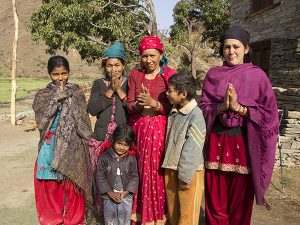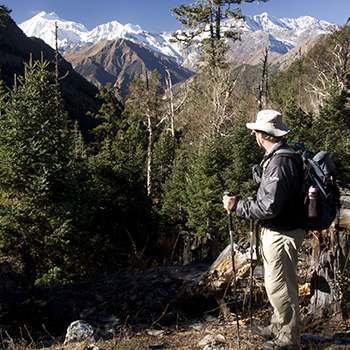GHT Code of Conduct
We took the time to to talk to as many people involved in the GHT as possible to come up with a GHT Code of Conduct that makes sense to everyone involved and is much more likely to be followed than ignored – we hope that you agree?
Please take the time to learn the GHT Code of Conduct and apply it as much as possible.

- Respect cultures and traditions – be a considerate guest, understand protocol, offer appropriate gifts when necessary, ask before taking a photo, do not show affection in public, and donations to gompas or shrines are appreciated.
- Benefit local communities, commercially and socially – share skills and experience, teach when you can, offer a fair pay for services, participate in activities. Do not encourage begging, publicly argue, drink excessively or fight.
- Adopt new customs – do not wear tight or revealing clothing, do not enter someone’s home unless invited, avoid touching people of the opposite sex, do not use your left hand to eat or pass objects and try to learn as much Nepali as possible.

- Tread softly – stick to trails and recognised camping areas. Avoid creating new tracks, or damaging the environment in any way. Follow the adage: take only photos and leave only footprints.
- Pack it in, pack it out – avoid taking tins, glass, or plastic containers and bags unless you plan to carry them back to Kathmandu or Pokhara. Wash away from water sources and always use local toilet facilities when available. Bury all organic waste at least 30cm below the ground and ideally 50m away from water sources.
- Conserve natural resources – what few resources there are belong by right to the locals. Always ask permission before using anything along the trail. It is illegal to disturb wildlife, to remove animals or plants, or to buy wildlife products.

- Beware of altitude sickness – use the buddy system to watch for symptoms of altitude sickness. Make sure everyone remains fully hydrated by drinking water throughout the day, every day. Stay together along the trail, and communicate frequently with everyone.
- Be safe – carry an extensive first-aid kit and know how to use it. Have multiple plans for emergency evacuation and designate decision-makers. Leave your itinerary details with someone responsible at home. Beware of yaks and other animals on narrow trails!
- Be self-reliant – don’t assume you will receive help or assistance. Ensure your group has extensive field-craft and navigation skills. Research thoroughly, is your route appropriate for your party? Do you have the necessary skills, experience, resources and equipment?
MyGHTi Project
It’s not just talk, we also walk and do. The GHT Code of Conduct inspired us to head to hills and find out what life is really like for the locals and the impacts of trekking on the environment – the result is the MyGHTi Project.
We take responsible and sustainable tourism seriously, so we have also calculated the Social, Green House Gas and Waste emissions for every trekker on every trek on this website. For more information see The Impact of Your Trek.
Important notes
- Walking times, both of total trek duration and daily walking times are for the average trekker of good fitness and you will probably not walk exactly the same time. Measure your walking pace against those stated and you should find that it is consistently different. You can then calculate your relative walking time for each day. Note that the walking times quoted do not include any rest breaks.
- Total trek durations are for itineraries that begin and end in Kathmandu or Pokhara.
- Quoted altitudes have an average accuracy of + or -15m; however, considering trail and demographic changes, it is wise to assume a general accuracy of + or -50m.
- Place names are given in their most common form but pronunciation may vary considerably.
- Directions are given as you look ahead, or in the direction of movement along the trail. When referenced to a water course, directions are given as the ‘true’ direction (facing downstream) so, ‘true left’ is the left bank of a river while facing downstream.
- Make sure you are not over committing yourself. Your mental and physical health combined with environmental factors can affect your trekking speed on a daily basis.

Get Planning…
We’ve tried to put everything you need to know to plan and trek your GHT adventure on this website, but maybe we’ve missed something? Or you have some more detail or have questions? If so, please feel free to Get in Touch.













